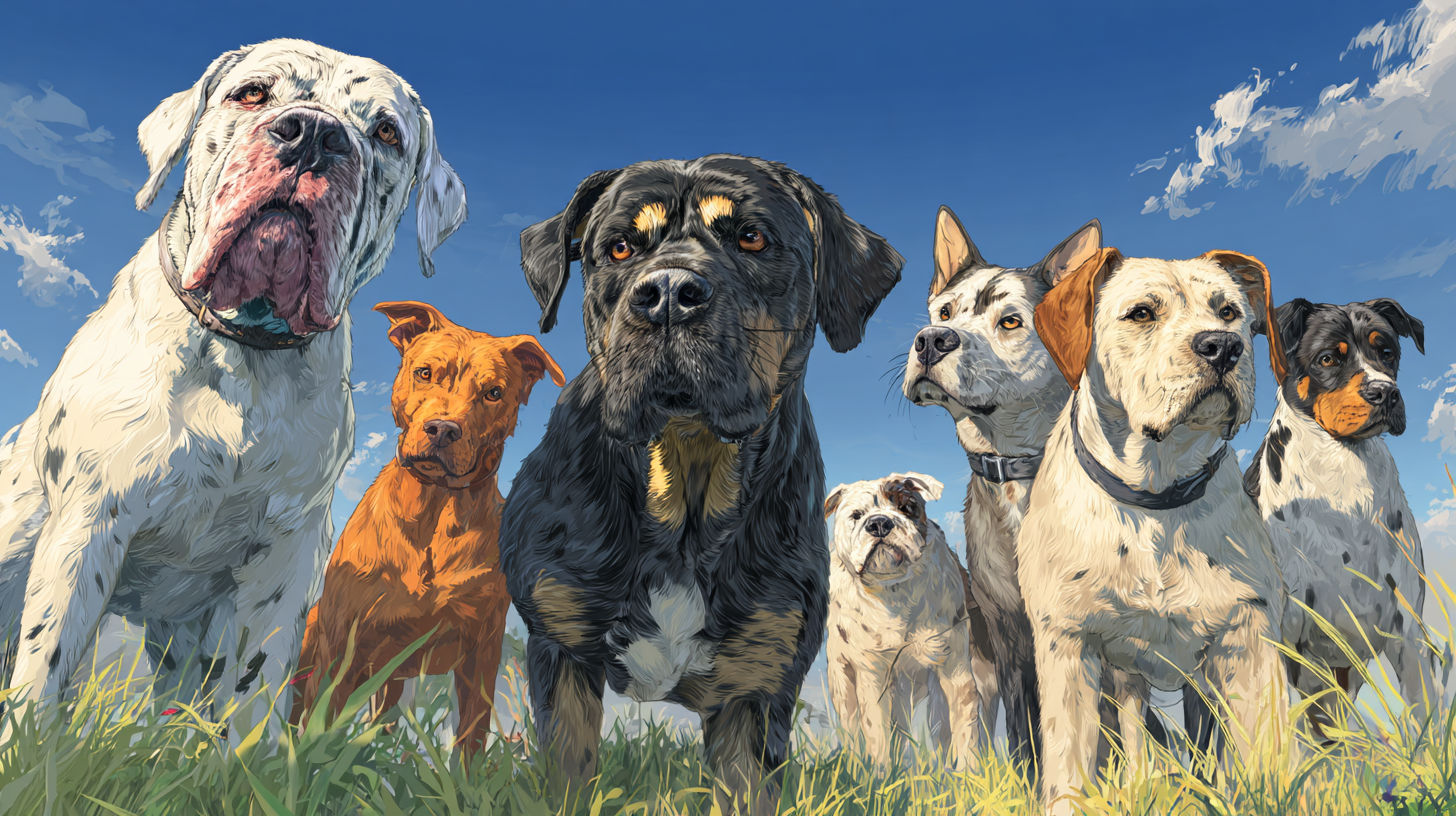4 Types of Large Breed Dogs: Characteristics and What to Know Before Adoption
Have you ever wondered what makes large breed dogs so special and why they are becoming increasingly popular among pet lovers? With their impressive size and unique temperaments, large dogs can be wonderful companions but also require specific care and attention. In this post, i’ll explore the four main types of large breed dogs, their distinctive characteristics, and crucial tips for adopting and caring for these gentle giants. Whether you’re a first-time dog owner or a seasoned pet parent, understanding these big breeds will help you make an informed decision and ensure a happy, healthy life for your future furry friend.
Understanding the Types of Big Dogs: Characteristics and Needs
Type 1: Mastiff-type Breeds
Mastiff-type breeds are known for their loyalty and calm demeanor. These dogs are incredibly patient and protective, making them excellent family guardians. They typically weigh between 130 to 230 pounds and stand about 23 to 28 inches tall. Due to their imposing size, they need a spacious environment like a large yard to thrive and sufficient socialization to prevent future behavioral issues. When adopting a mastiff-type dog, i always recommend regular health checks as they are prone to joint issues like hip dysplasia. Their low-energy level means they enjoy lounging but require daily walks to stay healthy and happy.
Type 2: Working-type Breeds
Working-type large dogs are highly intelligent and energetic. Weighing from 85 to 120 pounds and standing around 24 to 27 inches tall, these breeds excel in various tasks and protective roles. They are best suited for active homes with ample space and mental stimulation. Adopting a working breed requires commitment to regular exercise and training to harness their energy positively. They are generally very loyal but can be independent, so early socialization and consistent discipline are essential for balanced behavior. These dogs are also known for their resilience and strength, making them ideal for families who enjoy outdoor activities.
Type 3: Sporting-type Breeds
Sporting-type large dogs are famous for their friendly and outgoing nature. Weighing between 55 to 80 pounds and standing about 20 to 24 inches tall, their lively disposition makes them great family pets and companions for outdoor adventures. They’re less prone to health issues but still require regular exercise to stay fit. Adopting a sporting breed is perfect for active individuals or families who want a playful, social dog that loves to be part of the action. Their friendly temperament also makes them excellent with children, but consistent socialization is a must to ensure they remain well-behaved around others.
Type 4: Hound-type Breeds
Hound-type large dogs are characterized by their strong prey drive and independent nature. Weighing around 80 to 110 pounds and measuring 24 to 27 inches tall, they are known for their endurance and tracking skills. These breeds need a lot of exercise and mental stimulation to prevent boredom and destructive behaviors. They tend to be more stubborn and independent, so training should be patient and firm. Due to their strong prey instincts, caution is advised when they are off-leash, especially in open areas. Their independent personality makes them best suited for experienced dog owners who can provide consistent training and engaging activities.
Important Considerations Before Adopting a Large Breed Dog
Before bringing home a large breed dog, it’s vital to consider their specific needs and potential health issues. Hip dysplasia is common among big dogs and requires regular veterinary care. Space is another critical factor; large dogs need room to move and a secure yard for exercise. Proper training and socialization are essential to help them develop into well-mannered pets. Nutrition should be tailored to their size and activity level, and preventive health care can increase their lifespan, which averages around 8-12 years depending on the breed.
Key Tips for Successful Large Dog Ownership
- Provide a spacious environment with a large yard or access to open spaces
- Engage in daily exercise tailored to their breed type
- Schedule regular health check-ups to prevent common issues like hip dysplasia
- Invest in consistent training and socialization from an early age
- Feed a balanced diet suitable for large breed dogs to manage weight and health

Conclusion
Understanding the different types of large breed dogs and their characteristics can significantly impact your adoption success and your ability to provide proper care. From the loyal Mastiff to the energetic working breeds, each has unique traits that require tailored attention and environment. Proper research, preparation, and commitment will ensure your big dog becomes a cherished family member. If you’re ready to embrace a large breed, remember that their needs for space, exercise, and health care are crucial for a rewarding and long-lasting companionship. Happy adopting! 😊
FAQs
What are the most popular large breed dogs? Popular large breed dogs include the Labrador Retriever, German Shepherd, Golden Retriever, Mastiff, and Bernese Mountain Dog. These breeds are known for their friendly nature and adaptability.
What health issues are common in large breed dogs? Common health issues include hip dysplasia, elbow dysplasia, bloat, and certain heart problems. Regular veterinary check-ups are essential for early detection and prevention.
How much space do large breed dogs need? Large breed dogs typically require a large yard or access to open areas for exercise. They thrive in environments where they have enough room to move freely and play safely.
What is the average lifespan of large breed dogs? The lifespan varies by breed but generally ranges from 8 to 12 years, with some breeds living longer with proper care.
Are large breed dogs suitable for first-time owners? Some large breed dogs can be suitable for first-time owners if they have experience with training and socialization. Breeds known for their gentle and easygoing nature, such as the Labrador Retriever, are often recommended.